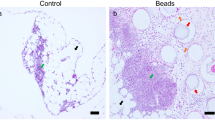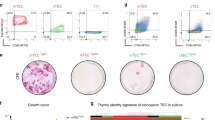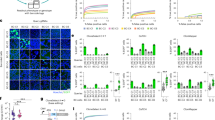Abstract
THE use of grafts and parabionts with marked chromosomes in investigations on the mammalian thymus has shown that there is substantial cellular traffic in this organ1,2. Using chick parabionts, it should be possible to make an assessment of the role of cellular immigration in the development of the lymphoid organs of this species.
This is a preview of subscription content, access via your institution
Access options
Subscribe to this journal
Receive 51 print issues and online access
$199.00 per year
only $3.90 per issue
Buy this article
- Purchase on SpringerLink
- Instant access to full article PDF
Prices may be subject to local taxes which are calculated during checkout
Similar content being viewed by others
References
Harris, J. E., and Ford, C. E., Nature, 201, 884 (1964).
Harris, J. E., Ford, C. E., Barnes, D. W. H., and Evans, E. D., Nature, 201, 886 (1964).
Fechheimer, N. S., and Jaffe, W. P., Nature, 211, 773 (1966).
Stenius, C., Christian, L. C., and Ohno, S., Chromosoma, 13, 515 (1963).
Owen, J. J. T., Chromosoma, 16, 1 (1965).
Jolly, J., Arch. d'Anat. Micros., 16, 363 (1915).
Ackerman, G. A., and Knouff, R. A., Amer. J. Anat., 104, 163 (1959).
Author information
Authors and Affiliations
Rights and permissions
About this article
Cite this article
JAFFE, W., FECHHEIMER, N. Cell Transport and the Bursa of Fabricius. Nature 212, 92 (1966). https://doi.org/10.1038/212092a0
Issue date:
DOI: https://doi.org/10.1038/212092a0
This article is cited by
-
Toxic effect of carrageenan on lymphoid-follicle associated epithelial cells of the bursa of Fabricius of chickens
Cell And Tissue Research (1981)



